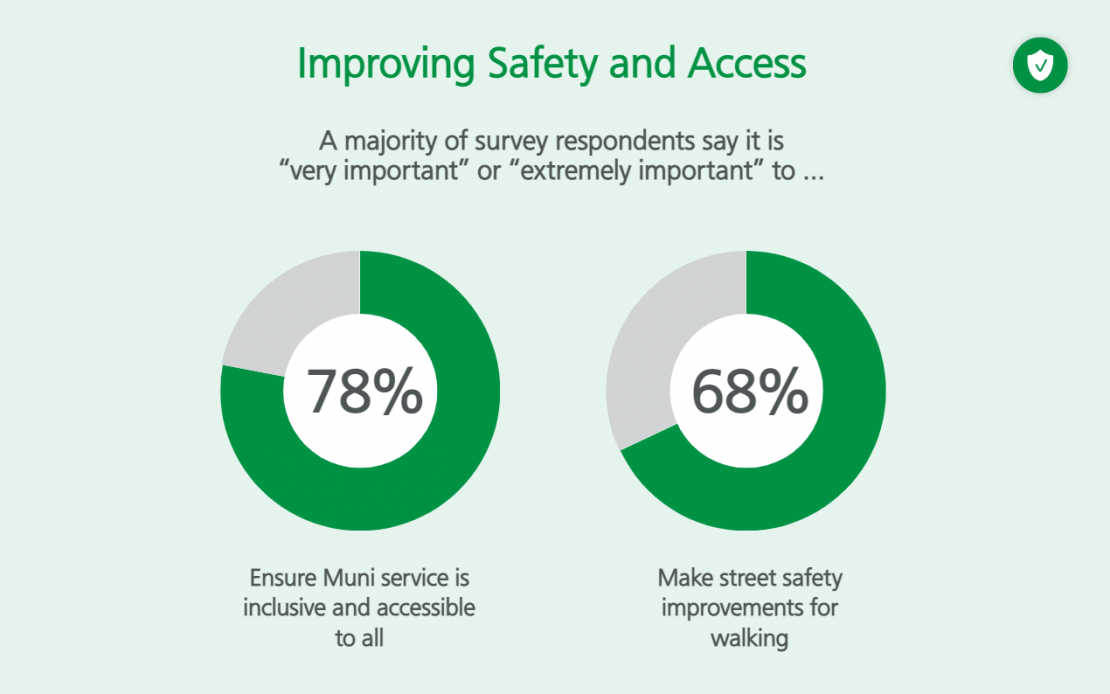
Improving Safety
Everyone in San Francisco deserves to feel safe. Yet each year, about 30 people lose their lives and over 500 more are severely injured while traveling on city streets. These deaths and injuries are unacceptable and preventable, and San Francisco is committed to stopping further loss of life. That’s why our transportation agency joined city leaders in 2014 to adopt a policy called Vision Zero, with the goal of eliminating all traffic deaths in San Francisco.
Today, more than 70 percent of severe and fatal traffic injuries occur on just 12 percent of city streets. Through Vision Zero SF, the City has used years of data to identify where the most investments in engineering, education, and enforcement should be focused to have the biggest impact in reducing fatalities and severe injuries.
Building a Safer Bike Network
When people feel safe and comfortable bicycling, more people choose to ride bicycles. When these bike rides replace car trips, it creates more room on our crowded roadways, reducing traffic congestion. The need for more bicycling infrastructure has become increasingly important as the way we move around the city continues to evolve. We want to ensure our commitment to expanding this network and connecting our city through the many new programs like Slow Streets, Shared Spaces and neighborhood ways.
San Francisco is a world-class city. No mistake on the road should result in the loss of life. Please join us in our mission to end traffic deaths. Visit the city's Vision Zero website.
The SFMTA’s Vision Zero Action Strategy Update identified key needs and priorities moving forward. Top community priorities include:
- Slow speeds through street redesign (quick builds and traffic calming) and decreasing speed limits on streets)
- Reduce conflicts at intersections for vulnerable road users
- Expand Slow Streets program to support mode shift
- Use speed detection systems to support traditional enforcement
- Focus education on the most dangerous driving behaviors
- Focus investments in Communities of Concern and the High Injury Network
Accessibility For All
Muni provides accessible public transit to virtually every corner of San Francisco, but there’s still work to do. While Muni operates a green, accessible bus fleet, we need to continue to improve the safety and accessibility of transit stations and stops, allow for easy boarding of Muni trains and improve street safety for people walking and in wheelchairs. Proven tools for success include:
- Wider sidewalks at bus stops (bus bulbs) to allow for easier, safer, and more accessible boarding
- New accessible platforms to provide safer boarding for Muni trains
- Improvements to Muni Metro stations
- Pedestrian signal upgrades to give people walking a head start crossing the intersection
- High-visibility crosswalks to improve safety for people crossing the street
- Corner sidewalk extensions to increase the visibility of people waiting to cross the street, shorten crossing distances and slow down turning vehicles
- Turn restrictions to reduce conflicts with people walking